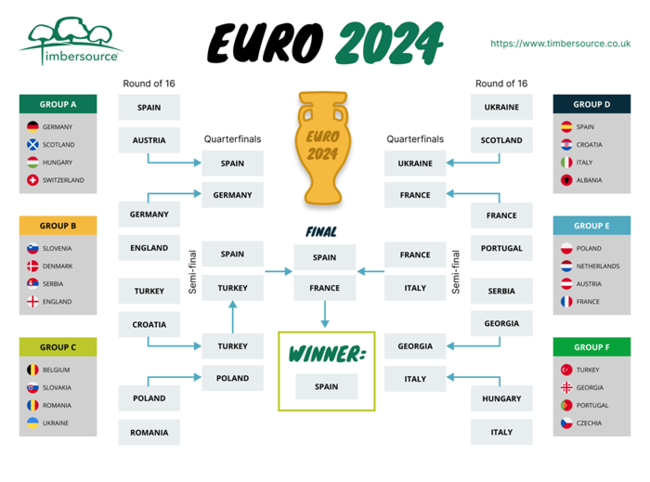Last Updated on: 14th June 2024, 08:30 am
As the Euros draw near, Timbersource took a closer look at the forestland of the nations in the tournament to see who would emerge ‘top of the tree.’ Unfortunately for England, despite advancing from the group stage, they are eliminated by Germany in the round of 16!
To figure out who would win the tournament, Timbersource collected data from Worldometer and the individual statistics hubs of each nation, creating a table showing the groups and their respective forest sizes. From this data, Timbersource analysed the potential matchups, mapping out the winners, runners-up, and ‘best third place teams’ to form the bracket.
This year’s ‘group of death’ was Group D, featuring strong contenders like France, Austria, and Poland. Despite being the second-largest team in terms of forest size, France only managed to secure second place due to the draw’s nature.
The bracket and routes to the final were based on the official UEFA Euros bracket, then cross-referenced with the forestland data to determine the winner: Spain. Spain was closely followed by France, with Turkey finishing third.
Which country has the most forestland globally?
Spain leads with over 18 million hectares of forestland, a key factor in their tournament win. However, one major country was absent.
Russia tops the list with over 800 million hectares, but due to the current situation in Ukraine, they have been banned from participating.
During the tournament, Timbersource will update the bracket to see how the actual Euros compare with the Forestland Euros. Hopefully, England will advance further than the round of 16!
The Benefits of Forestry
Forests are often overlooked, but they provide a wealth of benefits to our planet and our lives.
Some forestry benefits include:
- Mitigating climate change by removing a significant amount of carbon dioxide from the atmosphere and releasing oxygen.
- Providing resources for timber used in construction, furniture, musical instruments, and more. Timber can also be used for sporting equipment, such as in the Olympics!
The full dataset used in the research can be found here.









